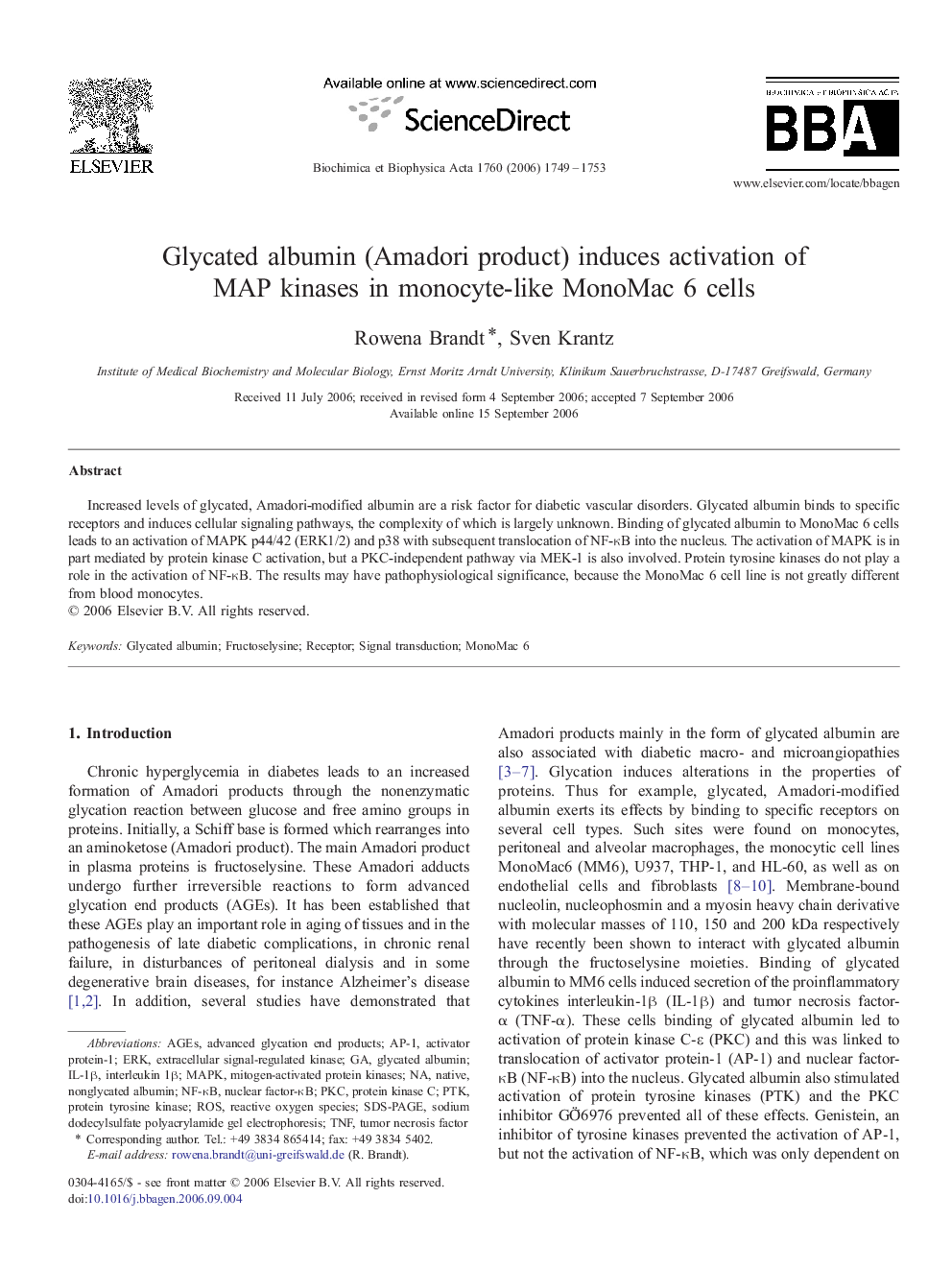| Article ID | Journal | Published Year | Pages | File Type |
|---|---|---|---|---|
| 1948716 | Biochimica et Biophysica Acta (BBA) - General Subjects | 2006 | 5 Pages |
Abstract
Increased levels of glycated, Amadori-modified albumin are a risk factor for diabetic vascular disorders. Glycated albumin binds to specific receptors and induces cellular signaling pathways, the complexity of which is largely unknown. Binding of glycated albumin to MonoMac 6 cells leads to an activation of MAPK p44/42 (ERK1/2) and p38 with subsequent translocation of NF-κB into the nucleus. The activation of MAPK is in part mediated by protein kinase C activation, but a PKC-independent pathway via MEK-1 is also involved. Protein tyrosine kinases do not play a role in the activation of NF-κB. The results may have pathophysiological significance, because the MonoMac 6 cell line is not greatly different from blood monocytes.
Keywords
NF-κBTNFPTKPKCAP-1IL-1βAGEsERKMAPKROSGlycated albuminSDS-PAGEsodium dodecylsulfate polyacrylamide gel electrophoresisinterleukin 1βtumor necrosis factornuclear factor-κBFructoselysineAdvanced glycation end productsSignal transductionProtein tyrosine kinaseactivator protein-1Protein kinase Cextracellular signal-regulated kinasemitogen-activated protein kinasesReactive oxygen speciesReceptor
Related Topics
Life Sciences
Biochemistry, Genetics and Molecular Biology
Biochemistry
Authors
Rowena Brandt, Sven Krantz,
